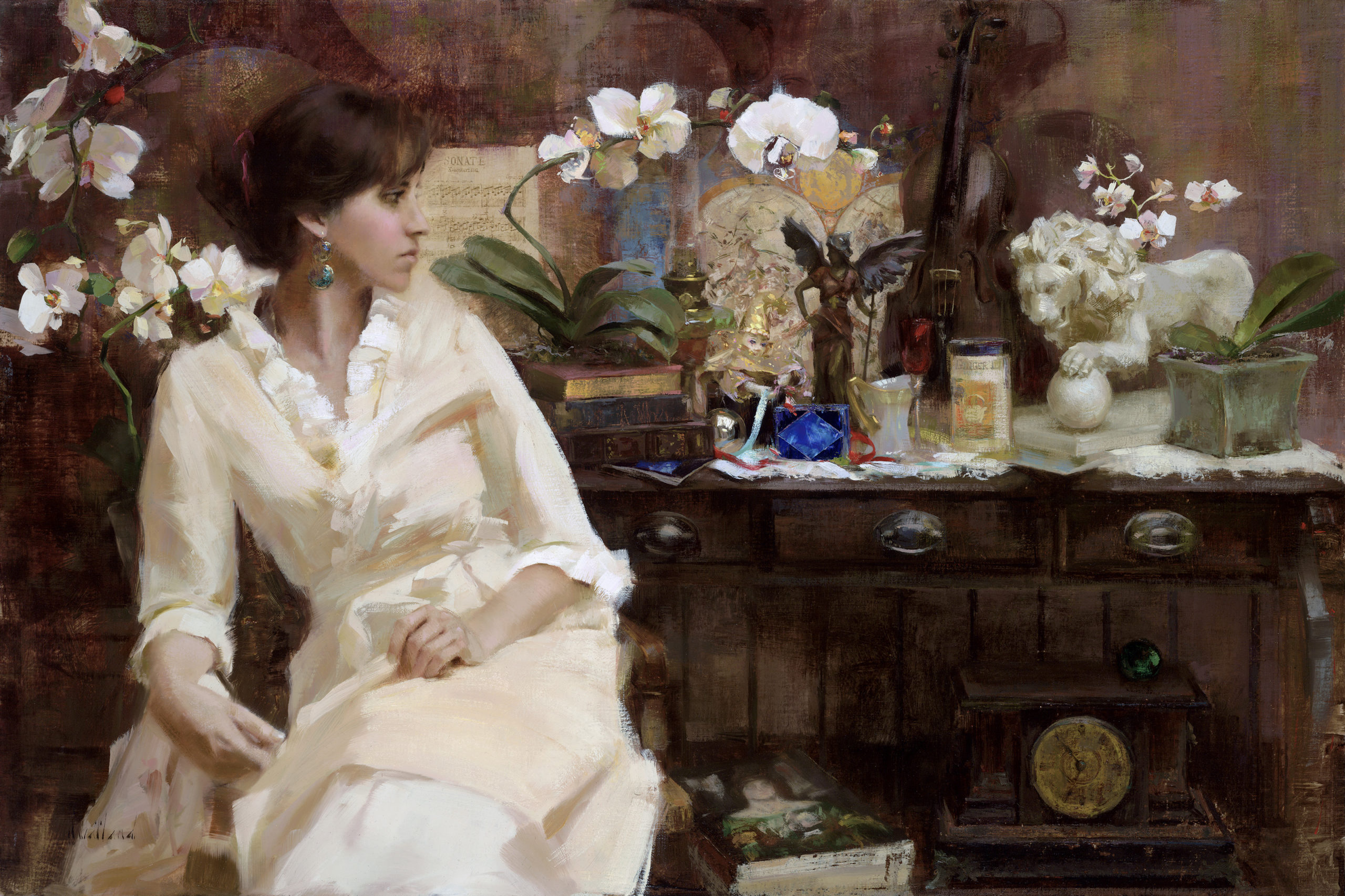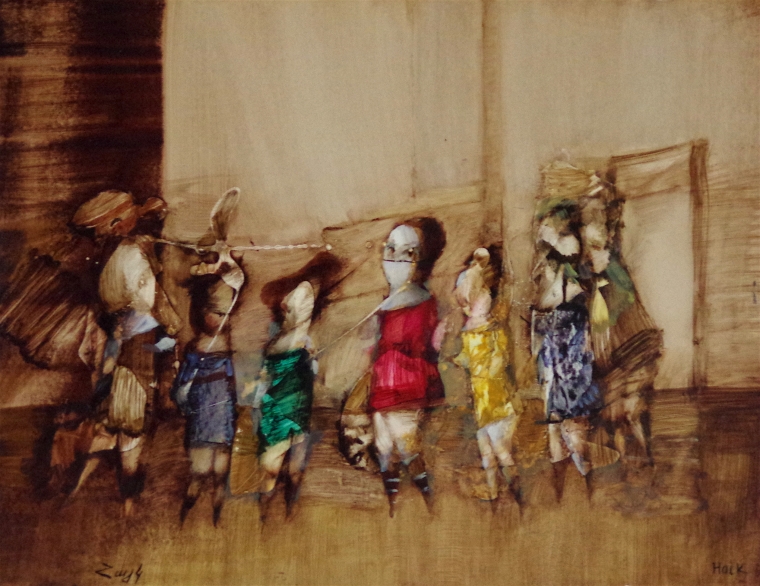The Evolution of Art: A Comprehensive Guide to Figurative Oil Painting
The Evolution of Art: A Comprehensive Guide to Figurative Oil Painting
Blog Article
The Advancement of Figurative Oil Painting: Understanding Its Historic Importance and Modern Interpretations
The development of figurative oil paint works as an engaging lens where to analyze the interplay between creative expression and historic context. From the precise naturalism of the Renaissance to the stirring power of the Baroque, each age has added layers of significance and method to this classic tool. Contemporary musicians, drawing from this rich heritage, are currently reinterpreting the human number in manner ins which challenge standard narratives. As we explore these improvements, one must take into consideration just how the dialogue between present and past informs not only imaginative practice but additionally social representations in an increasingly complex globe.
Origins of Metaphorical Oil Painting
The beginnings of metaphorical oil paint can be traced back to the early Renaissance in Europe, particularly in the 15th century. The growth of oil paint permitted for higher deepness of color and information, enhancing the realistic look and vibrancy of their work.

In this transformative period, figures were typically portrayed within contextually rich environments, showcasing not just their physical features yet additionally their psychological states. Pioneers such as Jan van Eyck and Titian harnessed the tool's flexibility, using layering methods to accomplish brightness and appearance. This innovation promoted the portrayal of detailed fabrics and the subtleties of skin tones, adding to the development of portraiture and narrative scenes.
Furthermore, the Renaissance emphasis on humanism cultivated a recognition for individuality, which consequently affected musicians to develop even more vibrant and relatable numbers - figurative oil painting. Therefore, figurative oil painting emerged as a powerful automobile for storytelling and psychological involvement, laying the groundwork for future artistic motions and styles
Key Historical Activities
Substantial historical activities have actually shaped the development of metaphorical oil painting, each adding unique ideologies and methods that broadened the medium's opportunities. The Renaissance noted a zero hour, emphasizing realistic look and the human form, with artists like Leonardo da Vinci and Michelangelo pressing the limits of physiological accuracy and perspective. Following this, the Baroque era brought remarkable contrasts of light and darkness, exhibited by Caravaggio, who infused religious themes with intense emotionality.
The 19th century introduced Romanticism and Realism, where musicians such as Delacroix and Courbet tested classical ideals, concentrating on private expression and everyday life. The introduction of Impressionism additionally changed the tool by emphasizing the effects of light and color, bring about a separation from conventional depiction.
In the very early 20th century, movements like Expressionism and Cubism redefined figurative paint through abstraction and the expedition of psychological depth. Each of these activities not only showed the societal modifications of their times yet additionally prepared for contemporary interpretations. The interaction in between these historic activities has produced a rich tapestry of designs and viewpoints, affecting contemporary artists in their quest of catching the human experience on canvas.
Strategies and Materials Advancement

Throughout the Baroque period, techniques such as chiaroscuro and sfumato arised, boosting the emotional resonance of figurative make-ups. Musicians began to try out glazes and impasto, manipulating texture and brightness. By the 19th century, advancements like the usage of pre-mixed paints in tubes changed accessibility, enabling artists to paint en plein air and catch the short lived effects of light.
The 20th century observed the introduction of artificial pigments and mediums, which increased the combination and modified the uniformity of oil paints. Additionally, the expedition of new application strategies, such as combination blades and brushes of differing tightness, more diversified artistic expression. Jointly, these advancements reflect the evolving relationship in between materials, techniques, and the artistic vision fundamental in figurative oil paint.

Contemporary Interpretations
Contemporary interpretations of figurative oil paint show a dynamic dialogue in between custom and technology, where musicians test developed standards and explore diverse motifs. This evolution manifests in different means, as modern artists blend classical methods with read the full info here modern-day ideas, frequently resolving social, political, and personal stories.
Many practitioners draw ideas from historic works, yet they instill their items with modern perspectives, utilizing the human form as a car for discourse on identity, sex, and society. Artists significantly try out abstraction, distortion, and combined media, which allows for a broader interpretation of the figure and its context.
Additionally, the use of vivid color schemes and unconventional make-ups frequently offers to disrupt standard checking out experiences, provoking important involvement from target markets. This change in emphasis extends past aesthetics; it shows an expanding awareness of the complexities of human experience in an interconnected world.
As metaphorical oil painting continues to advance, it continues to be an important medium for discovering the nuances of modern life, personifying both a regard for heritage and a dedication to modern thought. The result is a rich tapestry of expression that resonates with the intricacies of the modern-day human condition.
Influence on Modern Art
The effect of metaphorical oil painting on modern art is profound, as it has actually continually influenced a myriad of imaginative movements and practices throughout the 20th and 21st centuries. From Expressionism to Surrealism and beyond, the exploration of the human number has actually remained a main motif, enabling musicians to share intricate emotions and narratives. This focus on metaphorical depiction has brought about a re-examination of standard methods, resulting in cutting-edge techniques that blend realistic look with abstraction.
Moreover, modern artists have actually accepted metaphorical oil paint as a means to deal with political and social issues, using the medium to test perceptions of society, identification, and sex. The resurgence of rate of interest in figurative operate in current years mirrors a hoping for connection in an increasingly digital world, where human experience and feeling are extremely important.
In addition, the dialogue between figurative oil paint and modern-day art appears in the jobs of artists such as Kehinde Wiley and Jenny Saville, that attract on historic recommendations while infusing their pieces with modern significance. Inevitably, metaphorical oil painting remains to shape and redefine website link contemporary creative expression, highlighting its long-lasting value in the art world.
Conclusion
The evolution of metaphorical oil paint underscores its historic importance and flexibility across various imaginative movements. From the naturalism of the Renaissance to the stirring expressions of the Baroque and the ingenious approaches of modernity, this medium has actually constantly changed. Contemporary analyses reflect vivid shades and non-traditional structures, cultivating important interaction with political and social themes. Inevitably, figurative oil paint stays an essential medium for exploring the human experience, reverberating greatly in today's electronic landscape.
The evolution of metaphorical oil painting serves as discover this info here an engaging lens via which to examine the interaction between imaginative expression and historic context.Considerable historical movements have formed the advancement of figurative oil paint, each contributing unique philosophies and techniques that increased the medium's opportunities.As historical activities shaped the trajectory of figurative oil paint, the techniques and materials utilized by artists have actually additionally undertaken substantial transformations. figurative oil painting.The impact of metaphorical oil paint on modern art is extensive, as it has constantly inspired a myriad of artistic activities and methods throughout the 20th and 21st centuries.The advancement of figurative oil paint highlights its historical value and versatility throughout different imaginative activities
Report this page